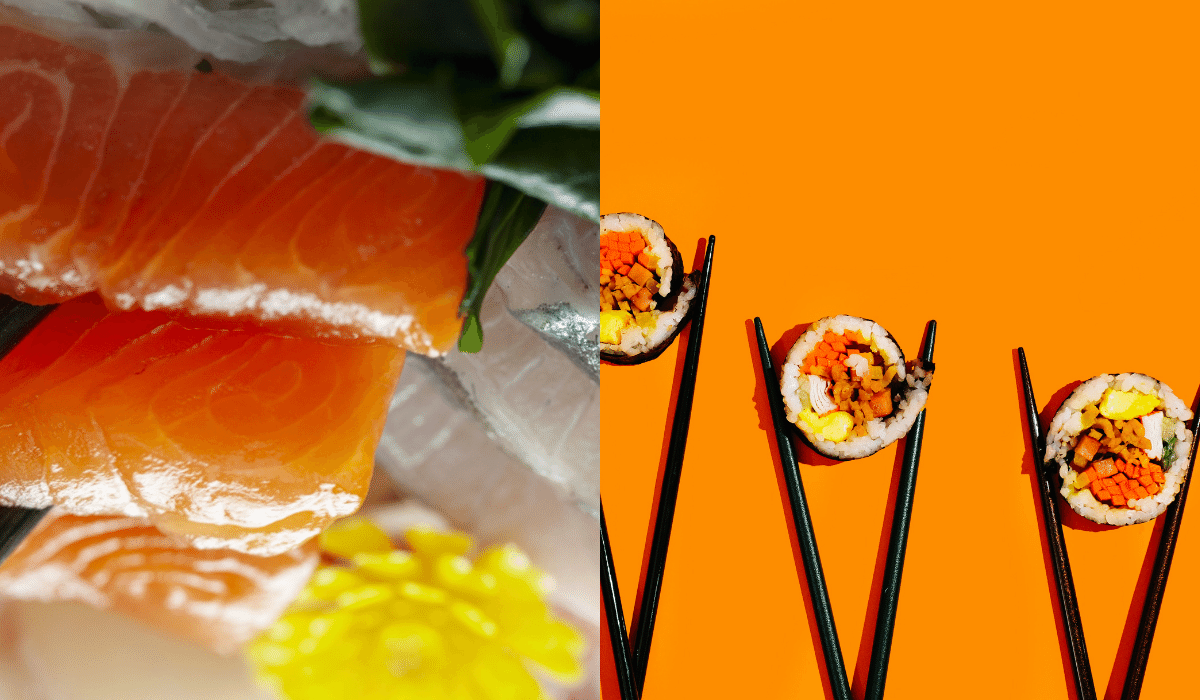As both sushi and sashimi are Japanese dishes, but still there are some differences between the two to be noted widely –
What Is A Sushi?
Sushi is a dish that combines foods with vinegared rice and is presented in bite-sized pieces. Contrary to popular misconception, sushi is not at all related to fish. The preparation of the rice required to make sushi is what is specifically described by the word “sushi.” Short-grain rice of a particular kind is used to make sushi and is cooked with rice wine vinegar. The vinegared rice has a distinct flavour of its own and clumps together to make sushi rolls and other dishes possible.
Fish and other forms of seafood are frequently used to make sushi. Occasionally, eggs or veggies like cucumber and avocado are added.
What Is A Sashimi?
Sashimi refers to a delicacy of thinly sliced fish or other forms of meat, and its approximate translation is “pierced body.” Sashimi is only served with soy sauce as a dipping sauce. This will make the meat’s flavour more prominent.
Some of the best seafood is fish fit for sashimi. It is caught on a single line as opposed to a net and is instantly killed and iced after being landed, allowing it to maintain freshness with little lactic acid buildup or degradation.. In Japan, additional meats, such as chicken, beef, and even horse, can be served raw.
Difference Between Sashimi And Sushi?
Sushi is as varied as it is tasty, whether it is ordered as an appetizer or eaten as the main course. But placing your first order can be a little frightening. You can order something you’ll like by understanding the various variations. Typically, there will be either sushi or sashimi on every dish on the menu. Nigiri, which is sold in pieces, and makes, which is offered in rolls, are further categories of sushi. It can be simpler to order sushi or sashimi when you are aware of the differences between the two.
Some more points can be useful to understand the comparison between the two –
Sashimi
Raw meat that has been finely sliced and is typically served without rice is called sashimi.
- Always raw
- Japanese
- Generally safe
Sushi
Not raw fish, but vinegared rice mixed with other namkeen flavours.
- Sushi is not usually cooked with ingredients.
- Japanese
- Safe but not for pregnant women
Nutrition Values
A sashimi or sushi dish’s calorie and carb count, as well as its fat, fibre, and protein content, frequently rely on the type of fish or meat that was used to prepare it. Sushi typically has more calories and carbohydrates than sashimi since it includes components like mayonnaise and rice. Both meals are often high in omega-3 fatty acids because fish is frequently used in them. The majority of current research on the advantages of omega-3s for health is not conclusive.
They Are Served Differently
Although sushi is typically served with a Japanese soy sauce known as “shoyu,” which the sushi is dipped in or drizzled with, it is also frequently eaten by itself.
In contrast, sashimi is exclusively offered with a dipping sauce. Wasabi paste is occasionally added to the soy sauce, which is uncommon while serving sushi.
